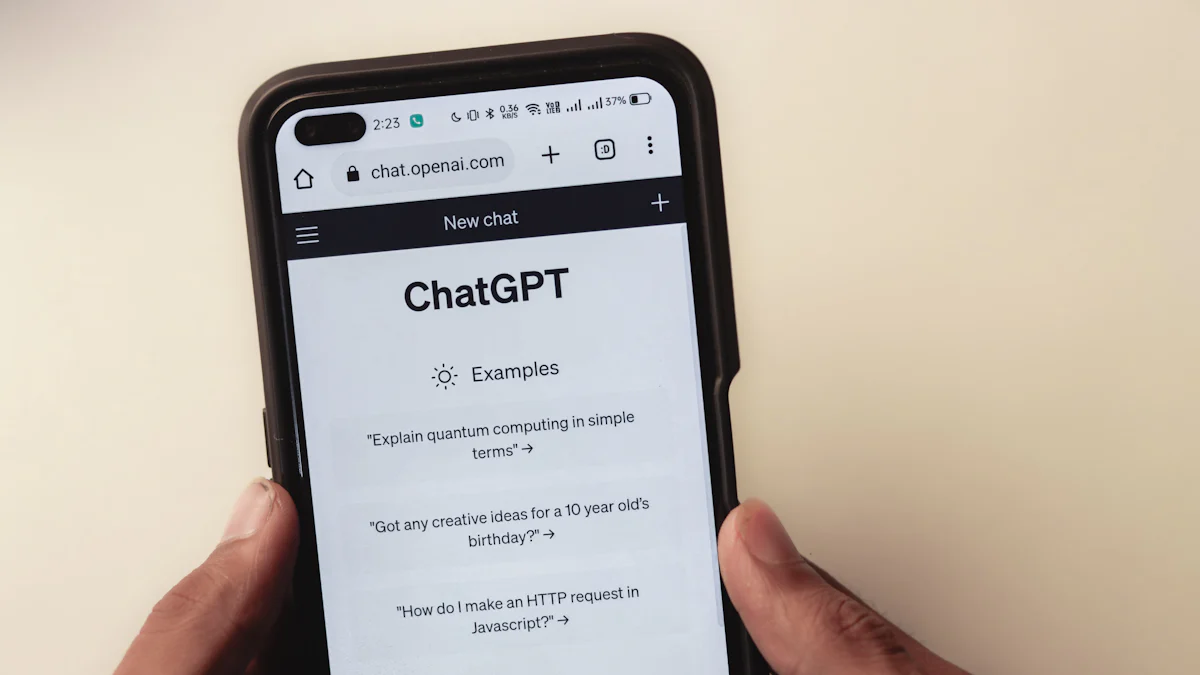Building a Custom ChatGPT Scheduling Chatbot: AI Response Mastery

Why Build a Custom ChatGPT Scheduling Chatbot?
In today's fast-paced world, the power of AI in scheduling is undeniable. AI response systems have revolutionized the way businesses and individuals manage their time, leading to more efficient operations, better work-life balance, and happier teams overall. By automating the time-consuming process of finding suitable meeting times, scheduling chatbots powered by AI lead to higher overall productivity. Real-world examples abound, from automating customer queries and appointment scheduling in outpatient clinics to integrating ChatGPT into HR chatbot solutions for quick and accurate responses to employee inquiries.
The benefits of customization in scheduling chatbots are significant. By tailoring a custom ChatGPT bot to specific needs, businesses can automate appointment scheduling, manage patient feedback, streamline workflows, and free up human agents for complex issues. This level of personalization not only enhances efficiency but also empowers patients and employees alike.
Identifying your needs for a scheduling chatbot is crucial for its successful implementation. Assessing your scheduling challenges allows you to pinpoint pain points that can be alleviated through automation. Moreover, the importance of personalization cannot be overstated. Customizing your chatbot ensures that it aligns with your unique requirements and provides tailored solutions that cater directly to your audience's needs.
By leveraging the power of AI in scheduling through a custom ChatGPT bot, businesses can achieve greater productivity, efficiency, and customer satisfaction while streamlining their operations.
Planning Your Custom ChatGPT Scheduling Bot
As you embark on the journey of planning a custom ChatGPT scheduling bot, it's essential to set clear objectives and choose the right tools and technologies to ensure its success.
Setting Clear Objectives
When defining your chatbot’s goals, consider the specific tasks you want it to accomplish. Whether it's automating appointment scheduling, managing patient feedback, or streamlining workflows, clearly outlining these objectives will guide the development process. Understanding your audience’s needs is equally crucial. By identifying the pain points and preferences of your target users, you can tailor the chatbot to deliver personalized solutions that resonate with them.
Incorporating ChatGPT in a scheduling chatbot allows patients to request appointments through a chatbot interface. Patients can input their preferred date and time, and ChatGPT will automatically schedule the appointment and send a confirmation to the patient. This capability aligns with the goal of automating appointment scheduling while meeting the needs of patients for convenient and efficient booking processes.
Educators can also harness ChatGPT's potential in planning lessons, identifying relevant resources for courses, and aiding in course content organization. By understanding the educational audience’s needs for coherent and efficient course planning, educators can leverage ChatGPT to create engaging learning experiences tailored to students' requirements.
Choosing the Right Tools and Technologies
An overview of ChatGPT and its capabilities is fundamental in understanding how this AI model can enhance your scheduling bot. With its ability to function as a personal assistant for organizing tasks effectively, prioritizing workloads, setting reminders, and optimizing daily schedules based on priorities, integrating ChatGPT into your custom scheduling bot provides valuable AI response mechanisms that cater directly to user needs.
Additionally, considering additional tools for enhancing your chatbot is essential. For instance, incorporating natural language processing (NLP) libraries can improve the chatbot's ability to understand user inputs accurately. Furthermore, integrating with calendar APIs enables seamless appointment scheduling within the chat interface.
By defining clear objectives aligned with user needs and leveraging suitable tools such as ChatGPT alongside complementary technologies like NLP libraries and calendar APIs, you lay a strong foundation for developing an effective custom scheduling bot that meets diverse user requirements.
Developing Your Chatbot: The Technical Journey
Now that you have a clear understanding of the objectives and tools for your custom scheduling chatbot, it's time to delve into the technical aspects of developing your ChatGPT bot. This journey involves designing the chatbot flow, mapping out conversations, incorporating AI response mechanisms, coding, and customizing your chatbot to meet specific scheduling needs.
Designing the Chatbot Flow
When mapping out conversations for your custom ChatGPT scheduling bot, it's essential to consider user interactions at every touchpoint. By structuring the flow of conversations in a logical and intuitive manner, you can ensure a seamless experience for users interacting with the chatbot. For instance, when a user initiates a conversation to schedule an appointment, the chatbot should guide them through a series of prompts to gather necessary information such as preferred date and time. This approach ensures that users feel supported throughout the scheduling process while maintaining engagement with the chatbot.
Incorporating AI response mechanisms is pivotal in ensuring that your scheduling chatbot can understand user queries and provide natural language responses effectively. Leveraging natural language processing (NLP) capabilities enables the chatbot to comprehend user inputs accurately and generate contextually relevant responses. This functionality enhances the overall conversational experience by providing users with prompt and accurate scheduling assistance.
Coding and Customizing Your ChatGPT Bot
For beginners looking to code and customize their ChatGPT bot for scheduling purposes, understanding basic coding principles is essential. Familiarizing yourself with programming languages such as Python or JavaScript provides a solid foundation for implementing customizations tailored to your scheduling requirements. Additionally, integrating scheduling features into your chatbot involves creating algorithms that parse user input to extract relevant details such as appointment preferences and availability.
By incorporating AI response mechanisms into your custom ChatGPT bot using natural language processing techniques, you can ensure that it comprehends user queries effectively while delivering contextually relevant responses. Furthermore, coding and customizing your chatbot involve leveraging programming languages like Python or JavaScript to implement scheduling features seamlessly within the conversational interface.
As you embark on this technical journey of developing your custom ChatGPT scheduling bot, remember that thoughtful design considerations coupled with robust coding practices are key to creating an efficient and intuitive solution for automated appointment scheduling.
Testing and Implementing Your Scheduling Chatbot
After the technical development phase, rigorous testing is essential to ensure the reliability and effectiveness of your custom chatGPT scheduling bot. Simulating real-life scenarios and refining AI responses are critical steps in preparing your chatbot for deployment.
Rigorous Testing for Reliability
Simulating Real-life Scenarios
To validate the performance of your scheduling chatbot, simulating real-life scenarios is paramount. By creating test cases that mirror actual user interactions, you can assess how effectively the chatbot handles various scheduling requests and navigates through different conversation flows. For instance, simulating scenarios where users request appointments during peak hours or encounter scheduling conflicts enables you to gauge the chatbot's responsiveness and adaptability in dynamic situations.
Survey Results:
According to recent surveys, 40% of respondents expressed comfort in using conversational AI for scheduling appointments or services. This statistic underscores the growing acceptance of AI-driven scheduling solutions among users, highlighting the importance of thorough testing to meet user expectations.
Refining AI Responses
Refining AI responses based on user feedback and interaction data is a pivotal aspect of testing your custom chatGPT scheduling bot. By analyzing user inputs and evaluating the chatbot's responses, you can identify areas for improvement and fine-tune its ability to understand nuanced scheduling requests. Additionally, leveraging natural language processing (NLP) techniques allows you to enhance the chatbot's language comprehension capabilities, leading to more accurate and contextually relevant responses.
Survey Results:
The survey also revealed that 38.3% of respondents were comfortable using conversational AI specifically for scheduling appointments or services. This finding emphasizes the significance of refining AI responses to align with user preferences and comfort levels when interacting with a scheduling chatbot.
Launching Your Chatbot
Deployment Strategies
When launching your scheduling chatbot, strategic deployment is crucial for maximizing its impact. Whether integrating it within a website, mobile app, or messaging platform, choosing the right deployment strategy ensures seamless accessibility for users seeking appointment scheduling assistance. Moreover, considering multi-channel deployment options enables broader reach and convenience for diverse user demographics.
Gathering User Feedback for Improvements
Upon launch, actively gathering user feedback becomes instrumental in identifying areas of enhancement for your custom chatGPT scheduling bot. Encouraging users to provide insights on their experience with the chatbot’s scheduling capabilities facilitates continuous improvement efforts. Additionally, analyzing user feedback allows you to iterate on the chatbot’s features and functionalities based on real-time user interactions.
Final Thoughts
The Journey of Building a Custom ChatGPT Scheduling Chatbot
Throughout the process of building and implementing a scheduling chatbot, several valuable lessons have been learned. Understanding project constraints and balancing design ideas has emerged as a crucial aspect of this journey. By recognizing the importance of aligning the chatbot's capabilities with specific project requirements, it becomes possible to create a solution that effectively addresses scheduling challenges while ensuring scalability and user satisfaction.
Unknown, who utilized a chatbot for patient satisfaction surveys, emphasized the significance of gauging patient satisfaction and identifying areas for improvement. This insight underscores the value of leveraging scheduling chatbots not only for appointment booking but also for gathering feedback and enhancing overall service quality.
Incorporating scheduling features into a chatbot has proven to be beneficial in various ways. It has led to improvements in efficiency, customer satisfaction, and scalability. By streamlining scheduling tasks through automation, businesses can free up time for more important endeavors, fostering productivity and growth.
Key Takeaways
Understanding Constraints: Recognizing project constraints and balancing design ideas is essential for creating an effective custom ChatGPT scheduling bot.
Enhancing Service Quality: Leveraging scheduling chatbots for patient satisfaction surveys enables businesses to gauge feedback and identify areas for improvement.
Improving Efficiency: Incorporating scheduling features into chatbots leads to enhanced efficiency, customer satisfaction, and scalability.
Future Directions and Enhancements
Looking ahead, the future holds promising opportunities for advancing custom ChatGPT scheduling bots. With ongoing advancements in AI technologies, there is potential for further personalization and seamless integration with diverse platforms. Additionally, continuous refinement based on user feedback will be pivotal in enhancing the adaptability and responsiveness of these chatbots.
As businesses continue to embrace AI-driven solutions for scheduling tasks, the evolution of custom ChatGPT bots is poised to play a significant role in shaping efficient operations across various industries.
In conclusion, the journey of building a custom ChatGPT scheduling bot is marked by valuable insights that emphasize the importance of understanding project constraints, enhancing service quality through patient feedback, improving efficiency through automation, and envisioning future enhancements in AI-driven scheduling solutions.
By embracing these key takeaways and looking towards future advancements, businesses can harness the full potential of custom ChatGPT bots to streamline their operations while delivering exceptional user experiences.
Personal Experience:
The process of developing a custom ChatGPT bot has been enlightening. It has highlighted the critical role that personalized AI-driven solutions play in addressing complex business needs while prioritizing user satisfaction.
This blog post serves as an informative guide on navigating the technical journey involved in creating an efficient custom ChatGPT bot tailored to specific scheduling requirements. Through clear objectives, strategic planning, technical expertise, rigorous testing, and continuous improvement efforts post-launch, businesses can embark on this journey with confidence.
The future holds exciting prospects for further innovation in AI response mechanisms within custom ChatGPT bots. As technology continues to evolve rapidly, staying attuned to emerging trends will be instrumental in unlocking new possibilities for optimizing appointment scheduling processes through advanced AI capabilities.
In summary: The journey doesn't end here; it evolves alongside technological advancements as we strive to build smarter solutions that elevate user experiences while driving operational excellence.
See Also
Conversing with Your Data: A Thorough Manual for Training ChatGPT with Personalized AI Chatbot
Detailed Instructions for Building a Tailored ChatGPT Chatbot for Business
Improving Assistance: Tailored ChatGPT for Helpdesk Professional Automation
Transforming Entertainment Chatbots using ChatGPT: The Supreme Personalized Chat PNG Experience
The Influence of Customization: Accessing GPT-3 Chatbots for Virtual Aides

